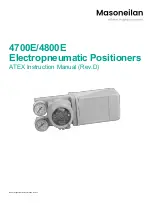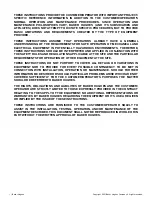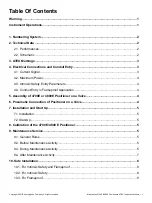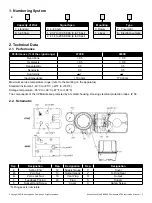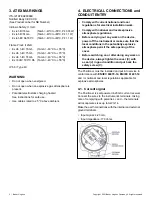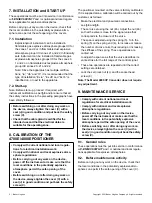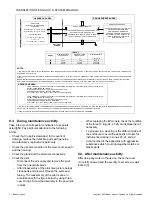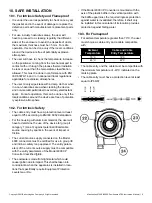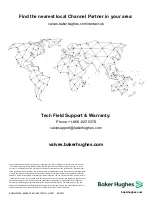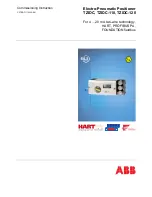
5 | Baker Hughes
Copyright 2021 Baker Hughes Company. All rights reserved.
7. INSTALLATION and START UP
These operations must be put into service in conformance
with
EN/IEC 60079-17
and / or national and local regula-
tions applicable for explosive atmospheres.
Before carrying out any work on the device, check that
the local conditions in the potentially explosive atmo-
sphere zone permit the safe opening of the covers.
7.1. Installation
Explosionproof instrument can be installed in
flammable gas explosive atmosphere groups IIC for
the zones 1 and 2 or in flammable dust explosive
atmosphere group IIIC zones 21 and 22. Intrinsically
safe instrument can be installed in flammable gas
explosive atmospheres groups IIC for the zones 0,
1 and 2 or in flammable dust explosive atmosphere
group IIIC zones 20, 21 and 22.
Note: Since the apparatus has multiple certifica-
tions: “ia”, “db” and “tb”, it is recommended that the
type of installation “Ex ia”, “Ex db” and “Ex tb” is
identified on, or next to the apparatus.
7.2. Start-up
Note: Before start-up, proceed, if required, with
instrument calibration as per
§ 8
and/or ensure that all
the safety instructions in the preceding paragraphs have
been strictly followed.
• Before switching on or after doing any work on
the device, always tighten the cover (C) with a
seal (J) in good condition and put back the safety
screw (V).
• Check that the cable gland is certified for the
intended use and that the electrical data are
suitable for the operating zone.
8. CALIBRATION OF THE
4700E/4800E POSITIONER
• Comply with current national and local regula-
tions for electrical installation work.
• Comply with national and local explosive atmo-
sphere regulations.
• Before carrying out any work on the device,
power off the instrument or make sure that the
local conditions in the potentially explosive
atmosphere permit the safe opening of the
cover.
• Before switching on or after doing any work on
the device, always tighten the cover (C) with a
seal (J) in good condition and put back the safety
screw (V).
The positioner mounted on the valve is factory calibrated.
If it is supplied alone, calibration will be carried out by the
customer, as follows:
• Make the electrical and pneumatic connections,
see
§ 4
and
§ 6
.
• The zero is set using the nut (4b). Adjust the nut (4b)
so that the valve is close for the signal value that
corresponds to the closure of the valve.
• The span is adjusted using the spring (5). Turn the
spring (5) on the spring end (4), to increase or reduce
the number of active coils, thus reducing or increasing
the stiffness of the spring. These operations are
carried out
to adjust the span so as that the valve describes its
entire stroke for the full range of the control signal.
• These two operations are repeated until the correct
settings are obtained.
• Lock the zero lock nut (4c) and the socket head
screw (8)
Note: The Model 4000 I/P Converter does not require
any adjustment.
9. MAINTENANCE SERVICE
• Comply with current national and local
regulations for electrical installation work.
• Comply with national and local explosive
atmosphere regulations.
• Before carrying out any work on the device,
power off the instrument or make sure that the
local conditions in the potentially explosive
atmosphere permit the safe opening of the cover.
• Before switching on or after doing any work on
the device, always tighten the cover (C) with a
seal (J) in good condition and put back the safety
screw (V).
9.1. General rules
These operations must be put into service in conformance
with
EN/IEC 60079-17
and / or national and local regula-
tions applicable for explosive atmospheres.
9.2. Before maintenance activity
Before carrying out any work on the device, check that
the local conditions in the potentially explosive atmo-
sphere zone permit the safe opening of the cover (C).

